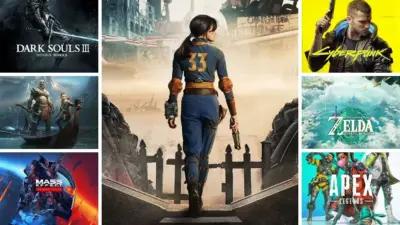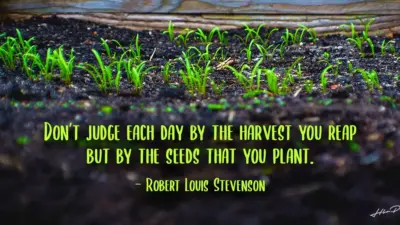Climate change stands as one of the most pressing environmental challenges of our time, manifesting through rising global temperatures, shifting weather patterns, and increasingly severe natural disasters. Its effects permeate diverse ecosystems across the planet, but forests are among the most significant and sensitive to these changes. As critical regulators of the Earth’s climate and invaluable reservoirs of biodiversity, forests play a vital role in carbon sequestration, influencing local and global climates and supporting countless species.
The impact of climate change on these vital ecosystems could be profound and multifaceted, affecting everything from individual species survival to entire forest structures and functions. This blog explores the potential consequences of our warming planet on forests worldwide, examining both the direct and indirect effects of climate change. By understanding these impacts, we can better prepare for and perhaps mitigate some of the most severe outcomes. As we delve into the complex interactions between climate forces and forest ecosystems, the importance of forests in our global ecological network becomes both clear and compelling.
The Role of Forests in the Climate System
Forests are not merely collections of trees; they are dynamic and intricate ecosystems that play a crucial role in maintaining the balance of the Earth’s climate. Here are the key functions of forests in the climate system:
Carbon Sequestration
Forests act as carbon sinks, absorbing carbon dioxide (CO2) from the atmosphere through the process of photosynthesis. This stored carbon is found in tree trunks, branches, leaves, and roots as well as in forest soils. The world’s forests currently absorb about one-third of the CO2 released from burning fossil fuels, making them a critical buffer against climate change.
Regulation of Water Cycles
Forests influence local and global water cycles through their ability to manage rainfall. Trees absorb water from the soil and release it back into the atmosphere through transpiration, which accounts for a significant portion of atmospheric moisture. This process not only regulates the availability of water but also cools the atmosphere and can influence weather patterns.
Biodiversity Support
Forests are among the most biologically diverse ecosystems on Earth, home to more than 80% of the terrestrial species of animals, plants, and insects. This biodiversity is not just a measure of ecosystem health but also a crucial component of forest resilience, enabling adaptation to changing conditions.
Impact on Local Climates
Forests can modify local climates by regulating temperature and humidity levels. The shade provided by forest canopies, coupled with moisture released during transpiration, helps to maintain lower ground temperatures, reducing the occurrence of heatwaves and creating more stable environments for a wide variety of species.
Soil Conservation
By protecting soil from direct sun exposure and reducing the impact of raindrops with their canopy, forests prevent soil erosion and promote nutrient cycling, maintaining fertile land that is crucial for agriculture and natural vegetation.

Direct Impacts of Climate Change on Forests
Climate change directly affects forests in several ways. Each of these impacts can alter forest ecosystems, often with cascading effects on biodiversity, climate regulation, and human economies. Here are the key direct impacts:
Temperature Increases
Rising global temperatures can stress forest ecosystems. Higher temperatures can reduce tree growth rates and weaken trees, making them more susceptible to diseases, pests, and competition from other vegetation adapted to warmer climates. Heat stress can also lead to increased tree mortality rates, altering forest composition and structure.
Altered Precipitation Patterns
Changes in rainfall patterns, including both increases and decreases in precipitation, can significantly affect forests. Increased rainfall can lead to waterlogging and root decay in areas not adapted to high moisture levels. Conversely, reduced rainfall can cause drought stress, lowering trees’ resistance to pests and diseases and increasing the likelihood of forest fires.
Increased Frequency of Extreme Weather Events
The increased frequency and intensity of extreme weather events, such as hurricanes, storms, and droughts, pose significant risks to forests. Storms and hurricanes can cause extensive physical damage to forests, snapping branches and uprooting trees. On the other hand, prolonged droughts exacerbate water scarcity, impacting not only the survival of trees but also the survival of the entire ecosystem dependent on the forest.
Impact on Phenology
Climate change affects the timing of many natural processes in forests, such as the flowering of plants, leaf unfolding, and migration patterns of birds and insects that rely on forest environments. These shifts can disrupt the synchrony of ecological interactions, such as pollination and seed dispersal, potentially leading to declines in forest regeneration and productivity.
Increased Carbon Dioxide Levels
While higher levels of CO2 can initially promote plant growth (a phenomenon known as the CO2 fertilization effect), the overall impact of increased CO2 is not uniformly beneficial. Forests may eventually reach a saturation point where they cannot absorb additional CO2, especially if growth is limited by other factors like nutrient availability or water.
Indirect Impacts of Climate Change on Forests
Climate change not only exerts direct physical effects on forests but also triggers a series of indirect impacts that can reshape forest landscapes over time. These indirect effects involve complex ecological interactions and can often be more difficult to predict and manage. Here are some key areas of indirect impact:
Pests and Diseases
Warmer temperatures and altered weather patterns create more favorable conditions for many pests and pathogens, leading to outbreaks that can devastate forest health. For example, bark beetles, which are normally controlled by cold winters, have expanded their range and increased their destructive impact on forests as temperatures have warmed. Similarly, fungi and other pathogens thrive in warmer and moister conditions, potentially leading to increased disease prevalence in forest ecosystems.
Fire Regimes
Climate change influences forest fire regimes by affecting both the frequency and intensity of wildfires. Warmer temperatures and prolonged droughts dry out organic matter, making forests more susceptible to fires. Additionally, changes in precipitation patterns and increased lightning activity during storms can also ignite more frequent fires. These altered fire regimes not only destroy vast areas of forest but can also change the species composition and structure of forests, promoting fire-adapted species over others.
Competition and Species Shifts
As climate zones shift, so too do the habitats suitable for specific tree species. Some species may find their current ranges no longer suitable and may migrate to higher altitudes or latitudes, if possible. However, not all species can migrate at the same rate, leading to mismatches in ecosystem structures. This can result in increased competition among species, with those unable to adapt or migrate potentially facing extinction.
Alteration of Nutrient Cycles
Changes in temperature and moisture levels can affect the decomposition of organic matter and the availability of nutrients in forest soils. Faster decomposition in warmer climates can initially release more nutrients, but over time nutrient depletion may occur if nutrient uptake by plants does not keep pace. This imbalance can lead to poorer soil quality, affecting forest productivity and resilience.
Impact on Pollinators
Climate change can disrupt the relationships between forests and their pollinators by altering flowering times and the availability of pollinators. If flowers bloom earlier due to warmer temperatures but pollinators have not yet emerged, pollination can fail, leading to reductions in seed production and ultimately affecting forest regeneration.

Conclusion
Throughout this blog, we have explored the various ways in which climate change is poised to impact forests globally. From direct effects like temperature increases and altered precipitation patterns to indirect influences such as pest outbreaks and shifts in species distributions, it’s clear that the challenges facing our forests are both complex and far-reaching. Forests are not just collections of trees; they are vital components of the Earth’s environmental system, crucial for biodiversity, water regulation, carbon sequestration, and much more.
Also Read: Difference Between Data and Information





